 |
SRGC Bulb Log Diary |
| Home Recommend This Site To A Friend |
|
BULB LOG 24 12th June 2003
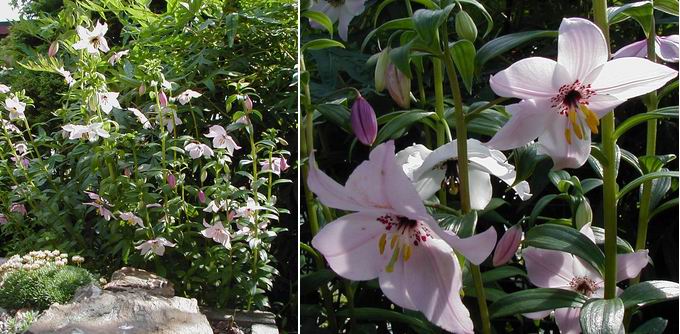
Nomocharis alternate x2 In the last log I showed the Nomocharis that we call the whorled types where the leaves are mostly in whorls up the stem, this is the other group that we raise from our own garden seed which have mainly alternate leaves, these are related to N. aperta and saluensis. If we look at the flowers of the alternate types they are not so dramatically spotted as those that I showed last week but still very beautiful. 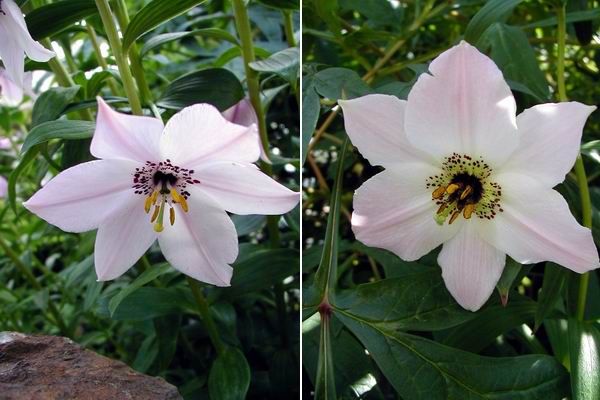
Nomocharis flowers x2 We also find that some of these seed raised nomocharis do not fall into the whorled or the alternate leaved types instead they have some whorled and some alternate leaves as well, obviously there is also hybridisation between these two types. This can also be seen in the flowers, the throat of the one on the right hand side has more similarities to N. pardanthina. 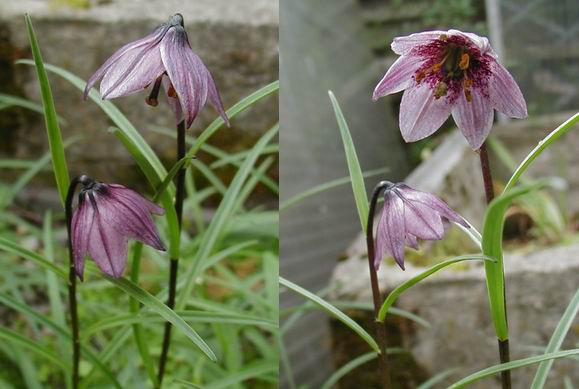
Lilium nanum x2 Staying with the lilies, one of the smallest, Lilium nanum, is flowering just now, there are several forms around from various collections and all are lovely. It is worth getting down to look up into the flower which has a nicely spotted throat. As most lilium nanum bulbs do not seem to live much more than five years in cultivation, this is another one that you need to raise from seed every year to be sure of keeping it in your garden. 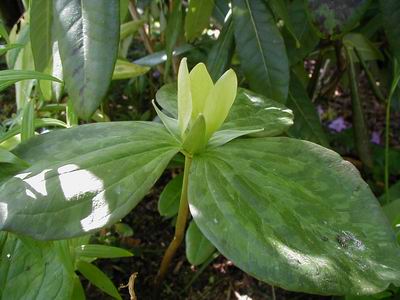
Trillium luteum Trillium luteum is always the last of the trilliums to flower for us, it is just opening its beautifully scented flowers just now. We grow it underneath some large rhododendrons which does not make it that easy to get down for a sniff, well I should say it is easy to get down but getting back up again can sometimes be a problem! 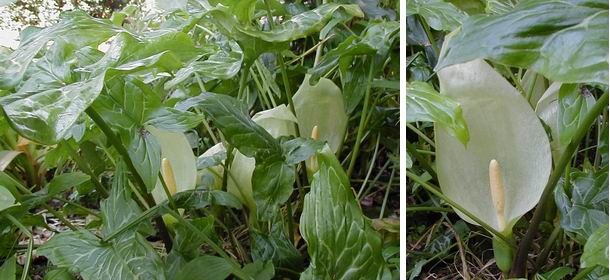
Arum italicum marmoratum As well as the beautifully marked leaves that are with us all winter, Arum italicum marmoratum also produces flowers which if pollinated will also give a stem of brilliant red berries in late summer. The foliage of this plant is much sought after by flower arrangers. 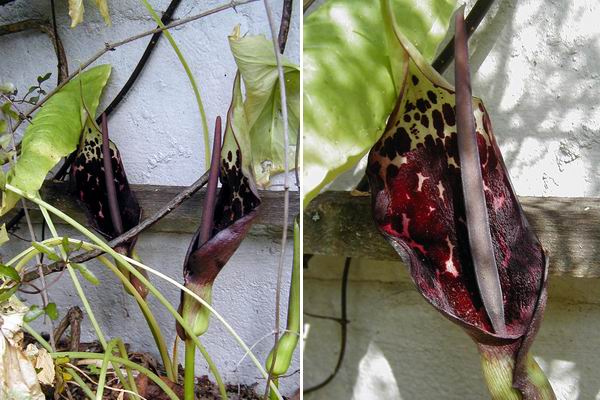
Arum dioscoridis Another arum with plain green leaves but very dramatic flowers is Arum dioscoridis. We grew this in a pot for many years where it was happily increasing but never producing a flower so in a clearout of the bulb house to create more space it was relegated to the garden. I chose the hottest spot that we had ( I know this is a bit of a joke this far north) and now it flowers on a regular basis. The flowers are a wonderful mixture of lime green and a velvety purple, the one problem is that the flowers smell of rotten meat which is a great attraction to wasps but has the opposite effect on human visitors.(and Maggi) 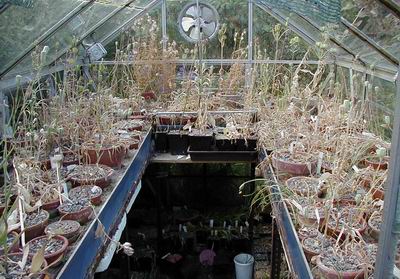
Frit house 11.06 In the frit house things are still about two weeks or more ahead of previous years and most of the bulbs have gone back already and the first seed capsules are just starting to split. Some of the young bulbs on the lower deck are still green and you have to be alert for green fly. 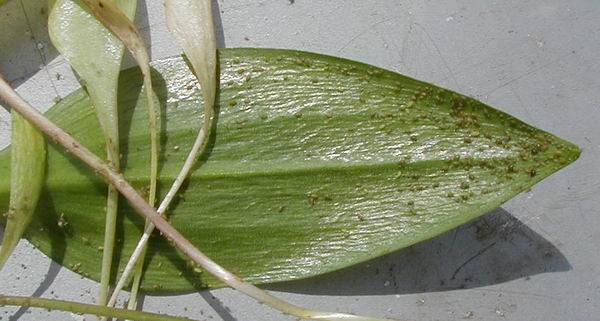
Green fly They seem to home in on the leaves of the young frits as they are just starting to go yellow, I suspect that there is more sugar or something that attracts them at this stage. When I find a late infestation like this I just tug the leaves off the plant rather than spraying with insecticide. The dying back of the bulbs heralds that a lot of repotting is just about to be done so it is time to prepare some potting compost. 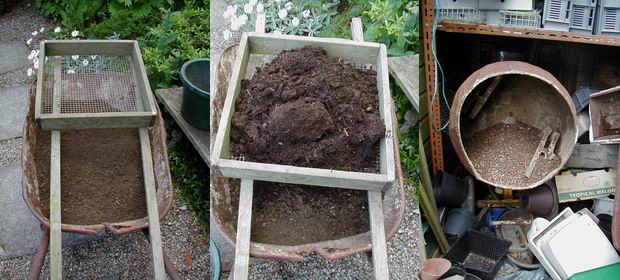
Compost ingredients We mix all our own and use the same mix for just about anything we grow in pots and troughs. From the left of the picture, we start with the loam element which is from a pile of turf that has been rotting down since we lifted our lawn many, many years ago, this we rub through a riddle. We also riddle our own leaf mould which is the composted remains of all the leaves that we collect in our garden. The final ingredient can be seen in our cement mixer, this is the 6mm gravel we get from the quarry. The mix is by volume, two parts loam, one part leaf mould and two parts gravel, to this we add a scoop of bone meal to provide slow release of nutrient. It only takes about ten turns of the drum to get a good mix, if you leave it going round too long I believe you damage the compost by over mixing. ^ back to the top ^ |